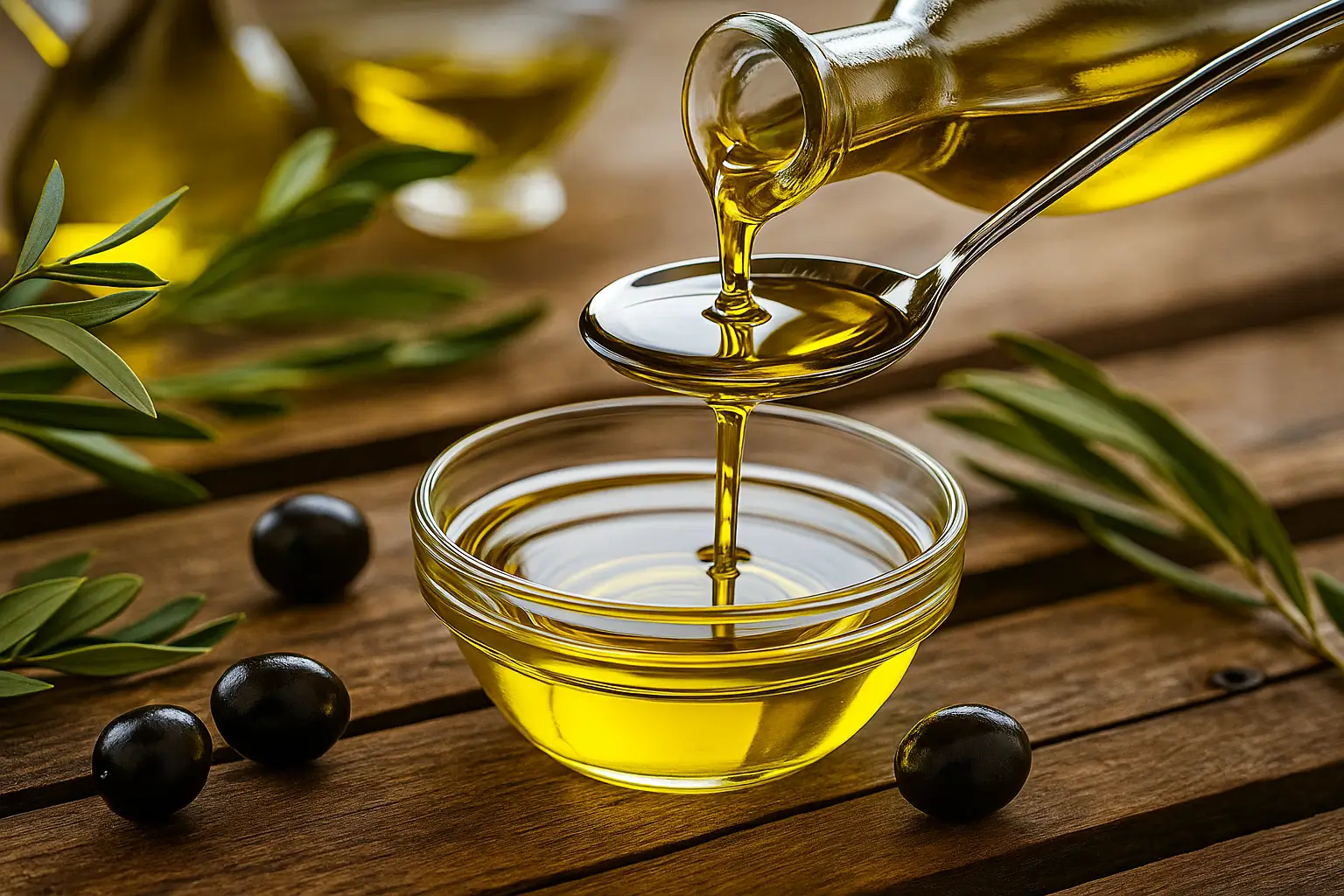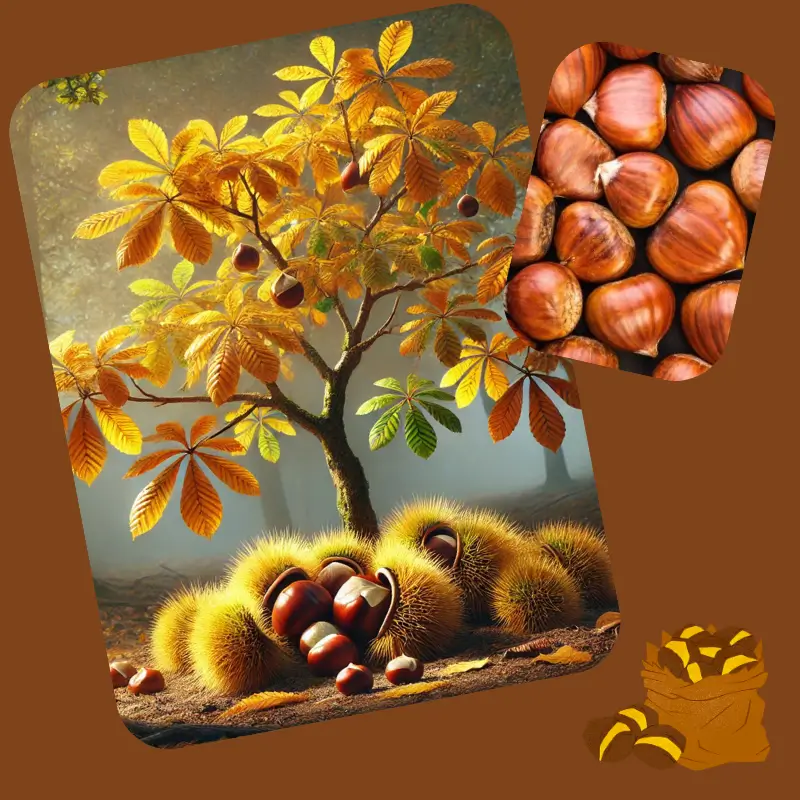Key Takeaways
-
Healthier than most nuts
Chestnuts are lower in fat and calories than most nuts, yet rich in fiber, vitamin C, and potassium.
-
Mediterranean celebrations
Autumn chestnut festivals—such as Magosto in Spain and Castagnades in France—are central to Mediterranean seasonal culture.
-
Historical significance
Historically called the “bread of the poor,” chestnuts were a staple food in mountainous regions where cereals were scarce.
-
Culinary versatility
Roasted chestnuts remain the most popular way to enjoy them, but they are also used in soups, cakes, and flours.
-
Diabetic-friendly option
Their low glycemic index makes them a suitable choice for diabetics and for balanced diets.
Mediterranean Chestnut Traditions: A Cultural Journey
The chestnut, that small brown nut, appears every autumn in markets and on the streets of many Mediterranean cities, bringing back memories of seasonal traditions and flavors. With its sweet and slightly smoky aroma when roasted, chestnuts transport us to moments of gathering around a fire or to street stalls that appear with the first chills. This nut has long been a staple in the diets of mountain and rural areas, and its popularity has endured thanks to its flavor and versatility in the kitchen.
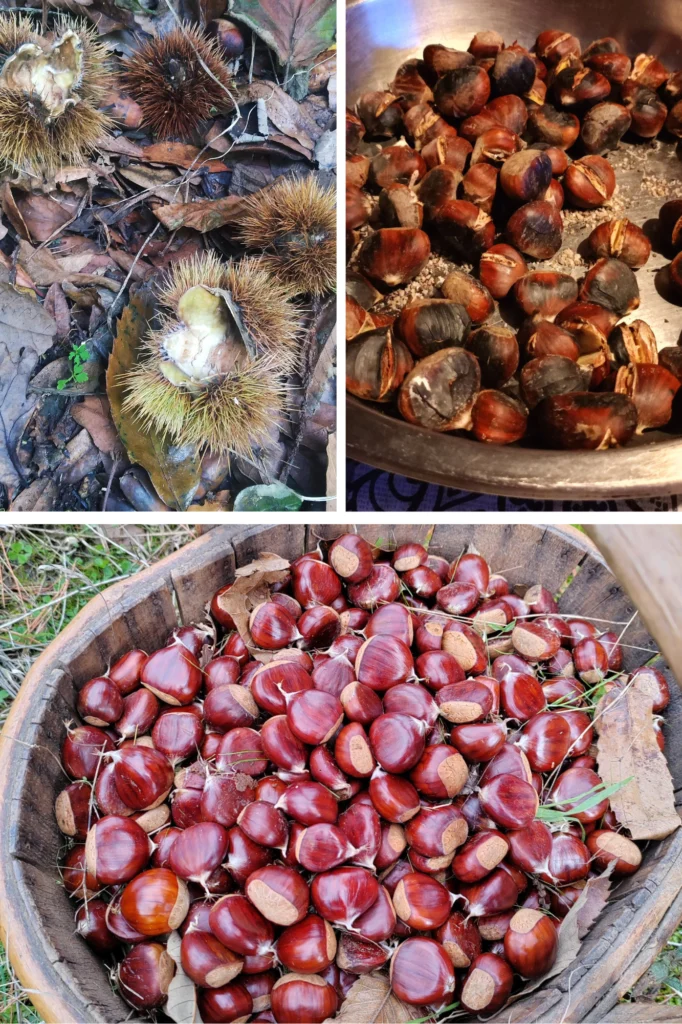
Ancient History: How Chestnuts Shaped Mediterranean Culture
Chestnuts have a long history in the Mediterranean. It’s believed that the Romans spread chestnut cultivation from Asia Minor across southern Europe, as the tree thrived in mountainous soils and temperate climates. During the Middle Ages, chestnuts were essential for many rural communities, especially during times of scarcity. Their low cost and high nutritional value made them a staple food, often called “the bread of the poor” in areas where wheat did not thrive. Over time, the use of chestnuts evolved from survival to tradition, becoming a symbol of the colder seasons and a characteristic element of autumn and winter festivities across the Mediterranean.
Best Mediterranean Chestnut Regions: From Spain to Greece
The Mediterranean basin is home to some of the best chestnut-growing regions, each with unique varieties and qualities.
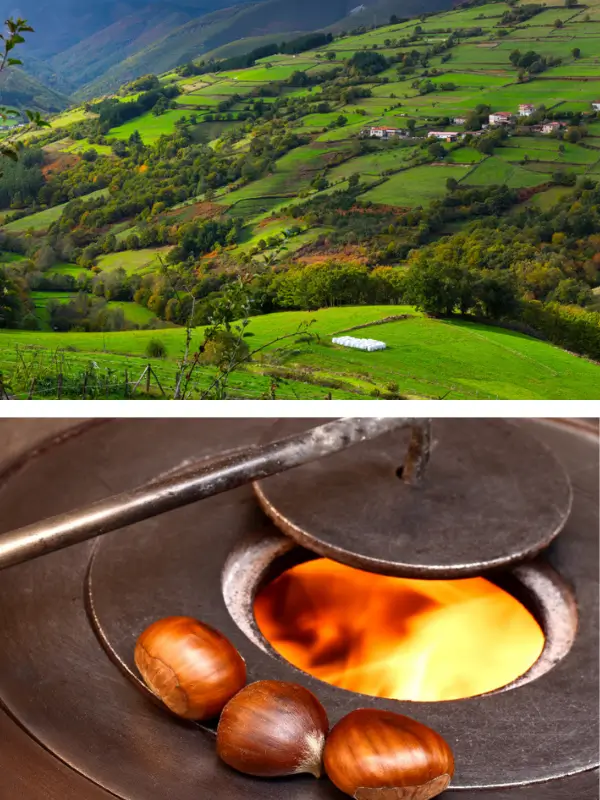
Spain: In Spain, the main chestnut-producing areas are Galicia, Asturias, Castilla y León, and Andalucía, particularly Málaga and the Sierra de Aracena in Huelva. In addition to enjoying chestnuts, in Málaga you can also try the famous espetos, a culinary tradition you shouldn’t miss.
Galicia is the largest producer, known for large, flavorful chestnuts that are exported to various European countries.
Italy: Italy is famous for its varieties of chestnuts and “marroni.” Tuscany, Piedmont, Liguria, and Emilia-Romagna are renowned for their high-quality chestnuts, many of which have Protected Designation of Origin (PDO) status. The “marrone di Cuneo” and Mugello chestnuts are especially prized.
France: In southern France, chestnuts of exceptional quality are grown. In Corsica and Provence, where chestnuts are an essential part of culinary culture, they even have their own PDO. In Corsica, this nut is used in many typical products.
Portugal: In northern Portugal, in Trás-os-Montes and Beira Interior, chestnuts are an important resource and a key ingredient in local gastronomy. Here, some of the oldest varieties are cultivated and valued for their flavor.
Greece: In Greece, chestnut groves are concentrated in mountainous areas like the Peloponnese, Macedonia, and Thessaly. Chestnuts are a popular winter food, and producing regions celebrate the harvest with local festivals.
Autumn Chestnut Festivals: Mediterranean Seasonal Traditions
🌰 Mediterranean Chestnut Festivals
Discover authentic autumn celebrations across the Mediterranean basin
Chestnuts hold a special place in Mediterranean autumn festivals. In Spain, the tradition of eating roasted chestnuts is linked to All Saints’ Day and La Castanyada in Catalonia, where this nut is associated with celebration and remembrance. In France, roasted chestnuts are a common sight in town squares during the colder months, while in Italy, autumn is filled with fairs and festivals dedicated to chestnuts, especially in rural areas. These roasted chestnut stalls, so common in Mediterranean cities and towns, bring a cozy atmosphere that accompanies the change of season. In many rural areas, families still gather to collect chestnuts and prepare them together, an activity that reinforces the bond between tradition and community.
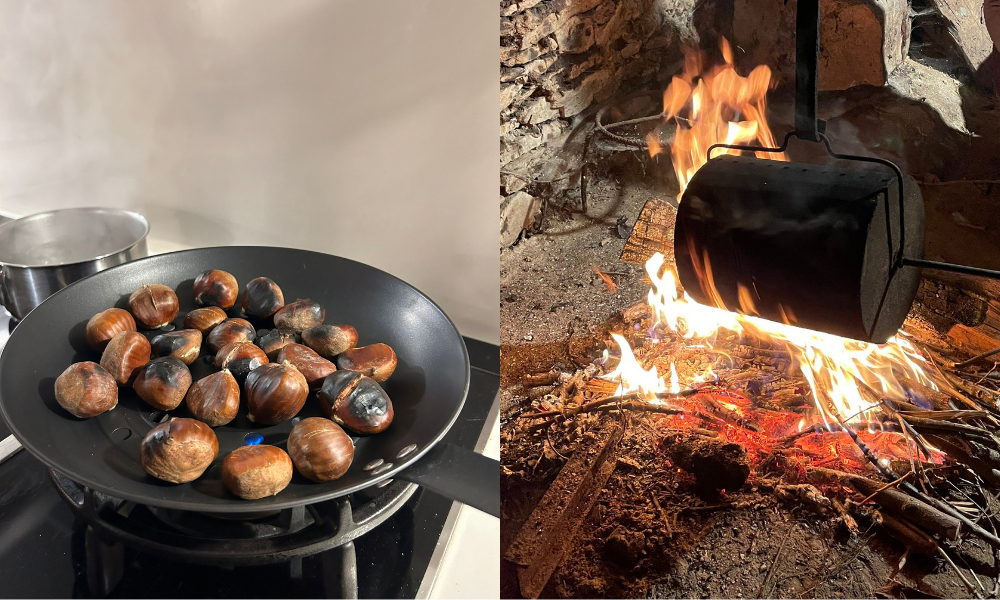
Traditional Mediterranean Chestnut Recipes & Cooking Methods
Chestnuts are enjoyed in various ways in Mediterranean cuisine:
Roasted: Perhaps the most traditional and popular method. Chestnuts are roasted directly over embers or in ovens, taking on a sweet and smoky flavor. This preparation is common at street stalls and outdoor celebrations.
Boiled: In soups and stews, chestnuts are boiled to achieve a soft texture. In the mountainous regions of Spain and Italy, they are part of traditional dishes and are often served with meats or vegetables.
Desserts: In France and Italy, the famous marron glacé is a delicacy, a candied chestnut requiring a delicate caramelization process. Chestnut purée is also popular in desserts like Mont Blanc.
Chestnut Flour: Used in breads, cakes, and cookies, especially in Italy, where the castagnaccio is a rustic cake made from chestnut flour, pine nuts, and rosemary.
Nutritional Properties and Health Benefits
Nutritional Properties & Health Benefits
Why Mediterranean chestnuts are more than just seasonal treats
High in Fiber
Supports healthy digestion and satiety for smarter snacking in autumn.
Approx.: ~8 g fiber per 100 g.
Naturally Low in Fat
Leaner than most nuts—heart-friendly within a Mediterranean diet.
Approx.: ~1–2 g fat per 100 g.
Steady, Sustained Energy
Lower glycemic impact than many snacks—helps avoid sharp spikes and dips.
Use case: active days & balanced carb intake.
Vitamin C + B Vitamins & Potassium
One of the few nuts with vitamin C; also provides B-complex and potassium for immunity, brain function, and cardiovascular support.
Approx.: ~20–30 mg vitamin C per 100 g.
Chestnuts stand out for their health benefits and nutritional value. They are rich in fiber, which aids digestion, and they have a low-fat content, unlike other nuts. They also provide B vitamins, potassium, and vitamin C, supporting immune function and cardiovascular health. Due to their low glycemic index, they are a good source of sustained energy and are suitable for people with diabetes.
Curiosities and Interesting Facts
Curiosities & Interesting Facts
Culture, history, and ecology behind Mediterranean chestnuts
Festivals Across the Med
Autumn chestnut fairs are a cultural staple: from Italy’s village sagre and Portugal’s São Martinho vibe to Spain’s Magosto and Corsica’s island-wide celebrations.
Magosto Tradition
Communities gather around open fires to roast chestnuts, drink the year’s new wine, and sing—an intergenerational ritual linking food, season, and place.
Flour of the Mountains
Chestnut flour sustained rural areas for centuries—nicknamed “the bread of the poor.” Classic dishes include Tuscan castagnaccio and Corsican cakes and crêpes.
Ecology & Biodiversity
Chestnut forests stabilize mountain soils, create shade-and-humus microclimates, and host a rich web of wildlife and fungi— a natural buffer against erosion.
Wood & Craft
Chestnut wood is naturally durable and rich in tannins—traditionally used for barrels, beams, and outdoor furniture throughout Mediterranean villages.
Protected Origin
Several chestnut varieties hold quality labels (IGP/PDO), reflecting local terroir and time-honored harvest methods across Italy, France, Spain, and Portugal.
A Mediterranean Treasure for the World
Chestnuts have been a staple of Mediterranean life for centuries. More than a seasonal symbol of autumn, they embody long-standing traditions that link food, landscape, and community.
Historically, chestnuts were so essential that they were often called the “bread of the poor,” providing a reliable source of carbohydrates in mountainous regions where wheat was scarce. Their role went beyond taste—they ensured survival and shaped local economies across Italy, Spain, Portugal, and southern France.
Today, chestnuts retain their place in Mediterranean gastronomy not only for their versatility in sweet and savory dishes, but also for their nutritional value. They stand as a reminder of how seasonal foods can bridge heritage and modern dietary awareness.
Frequently Asked Questions about Chestnuts
Are chestnuts gluten free?
Chestnuts are naturally gluten free. Chestnut flour has traditionally been used in Mediterranean mountain regions as an alternative to wheat flour.
How many calories do chestnuts have compared to other nuts?
Chestnuts are much lower in calories and fat than almonds or walnuts. A 100-gram portion provides about 200 calories, while almonds average over 550.
Are chestnuts good for weight management?
Yes. Their high fiber and low fat content make them filling without being calorie dense, which helps with portion control and satiety.
How do you roast chestnuts at home?
Score the shells with a small “X,” place them on a baking tray, and roast at 200 °C (390 °F) for 20–25 minutes. Cover with a cloth for five minutes before peeling.
Recommended Sources
European Food Safety Authority (EFSA). (n.d.). Nutrition. Retrieved from https://www.efsa.europa.eu/en/topics/topic/nutrition
Ministerio de Agricultura, Pesca y Alimentación (MAPA). (n.d.). Producciones agrícolas. Retrieved from https://www.mapa.gob.es/es/agricultura/temas/producciones-agricolas/
Consorzio di Tutela Marrone di Cuneo IGP. (n.d.). Marrone di Cuneo IGP. Retrieved from https://www.qualigeo.eu/en/prodotto-qualigeo/marrone-di-cuneo-igp/
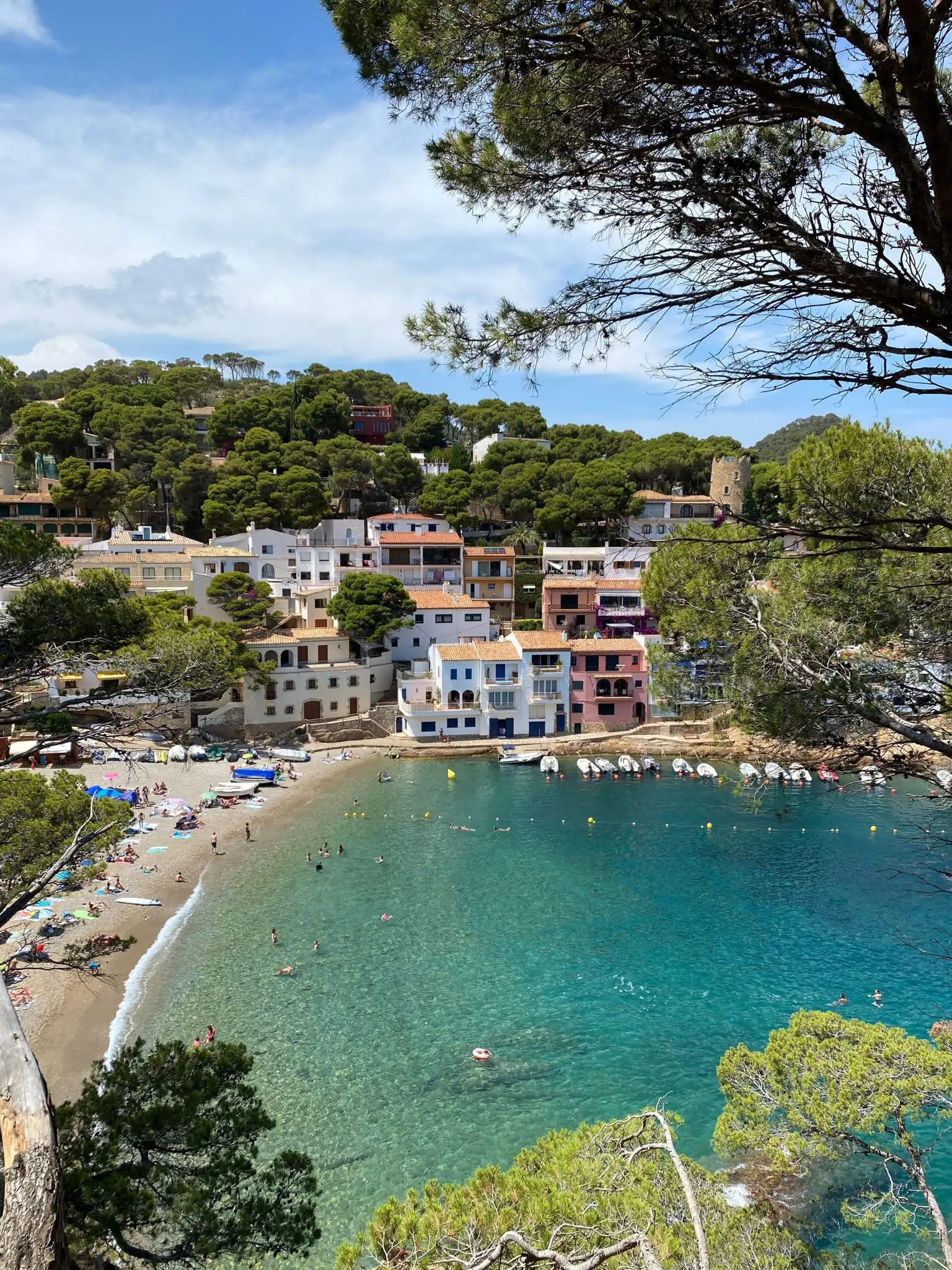
Costa Brava Without the Crowds: Peaceful Towns, Coastal Trails, and Honest Local Tips

What Is a Mediterranean Aperitivo? Meaning, Food and Ritual

How to Start a Mediterranean Morning Ritual: Coffee, Calm, and Sea Air
